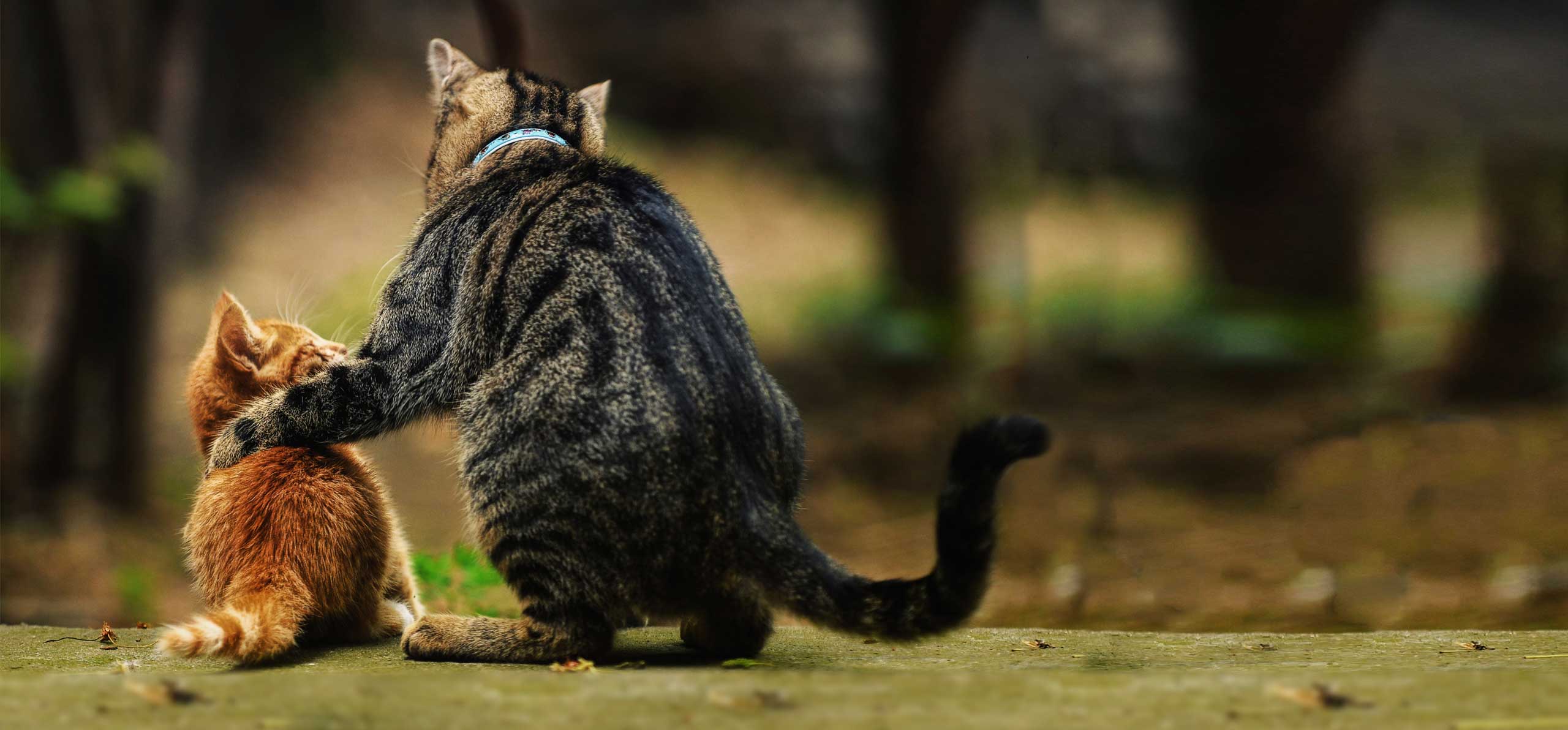Age before beauty
If your first-born cat is elderly, steer clear of kittens. Their high-octane energy may be too stressful for an older cat, especially if he/she is sickly. CAUTION: If your resident feline has physical limitations, it’s not a good time to adopt another cat at all.
Opposites don’t attract
Is your “top cat” energetic and healthy? Then a kitten might be the perfect match. Extroverted and assertive cats do well with like-minded social butterflies. It’s not wise to team timid felines with alpha cats.
General rule of thumb: Choose a smaller, younger, opposite-gendered cat. However, it’s more important to match temperaments than pick sexual opposites.
Check ups
Before you introduce your new cat to the family, all pets should get a vet visit to ensure they’re healthy. Your new cat will have his own check up within a few days of coming home, and a bath to eliminate fleas is also wise.
No bunking
This is one time when siblings shouldn’t share the same room. In the beginning, give your new cat a room of its own and be sure to spend a lot of alone time with him/her those first few days.
Keep the fur from flying
Cats are solitary, territorial creatures by nature so don’t force siblings together. It may take weeks or months for a cat to adjust to their new lifestyle. Cats introduced too quickly may fight and never learn to get along. Gradual introductions are essential for long-term brotherly/sisterly love.
Close encounter
Don’t hold the cats in your arms when they first meet or you could be the unintended victim of a catfight. Introduce them on the new cat’s turf and limit the time they spend together while you closely monitor their behavior. Crouching and hissing with ears back is normal, but if it escalates, separate the siblings and start over by feeding them on opposite sides of the door.
If a fight erupts, distract both cats by throwing a towel over their heads or make a loud noise. Don’t pick up the new cat if he/she’s aroused; instead, guide the new cat back to his/her sanctuary and wait a few days to try again.
Supervise all sibling encounters closely for signs of anxiety and aggression. If one or both cats freeze, stare or fixate on the other, distract and redirect them with treats or fun toys; this also helps reinforce positive rewards when they play nice.
Table for two
When the new cat is calm place both cats’ bowls on opposite sides of the door to his/her room, gradually moving the bowls closer at subsequent feedings. This is to reinforce the pleasure of food and eating with each other. If all goes well, open the door a sliver so they can see each other enjoying their meal.
Open house
As soon as your new feline eats and uses his/her litter box normally, it’s time to explore. Let him/her investigate one room at a time, while the “mayor” cat is in another area. Your new cat will sniff out his/her sibling sight unseen, but you can also swap bedding so the cats become acquainted with one another’s scent.
Security and patience
Your new feline will need his/her own one-on-one time with you and the security of a routine. Just like humans, some cats will bond easily and be forever friends, while others will never get on well.
Be patient: it usually takes 2-4 weeks for a kitten and an adult to adjust; 4-6 weeks (or longer) for adult cats. Remember, they don’t have to be best buddies; they just have to peacefully co-exist in your household.







